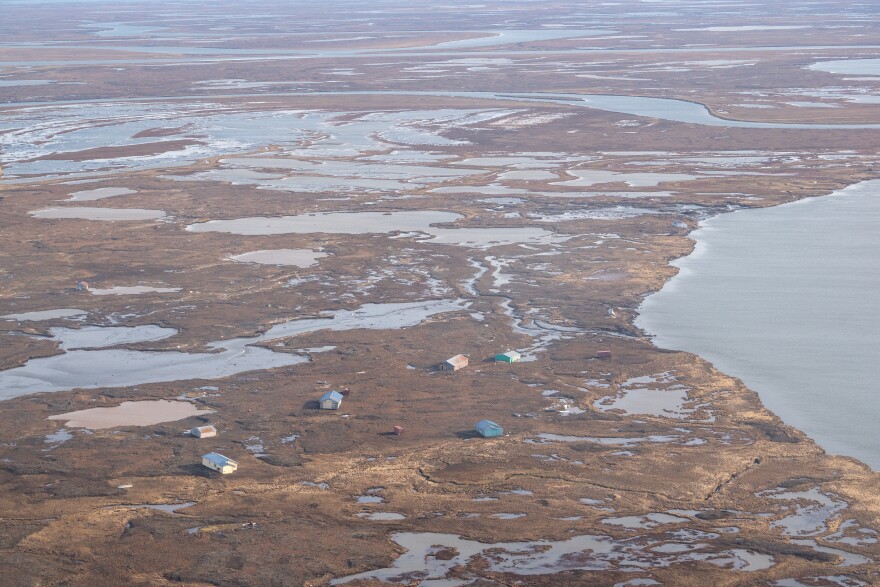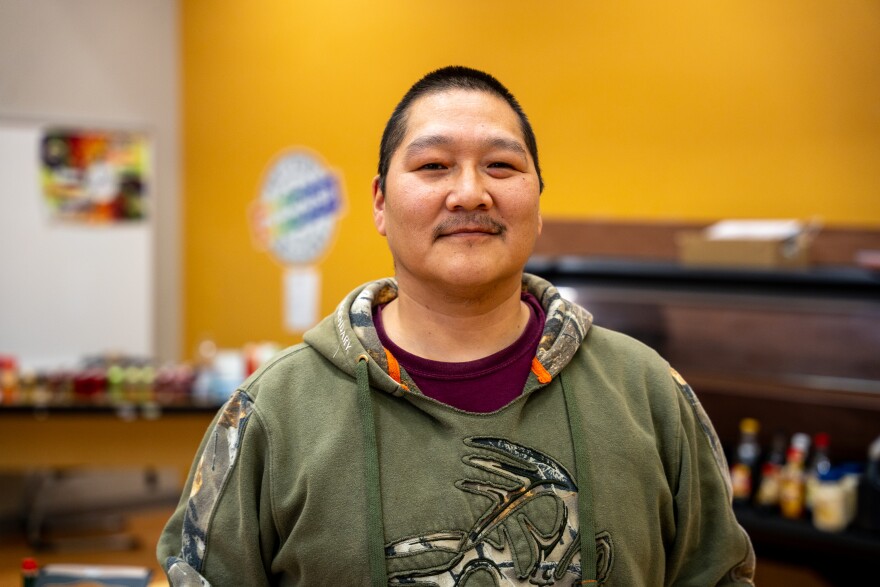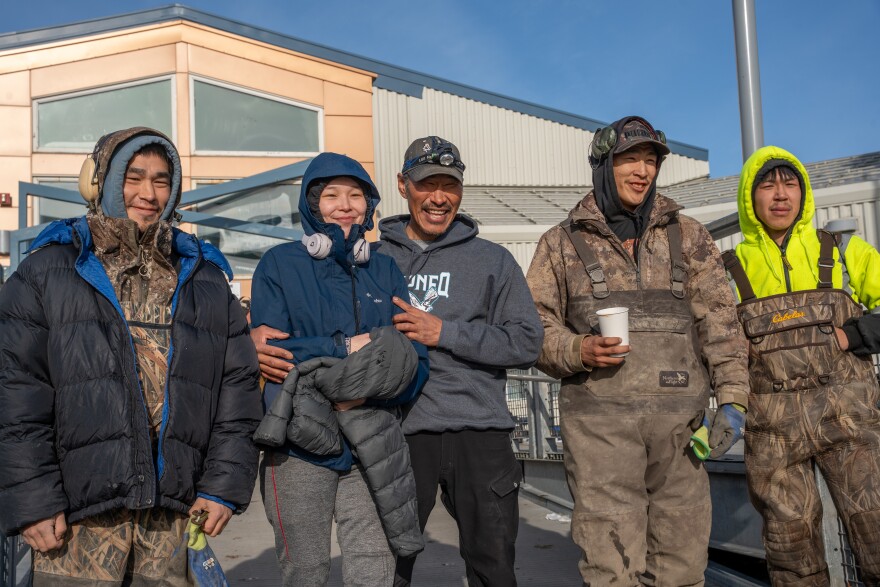It’s Sunday in Kipnuk.
And like a lot of folks on Sundays, Tony Paul is headed to the hardware store.
“We're making progress every day, seems like,” he said.
Unlike a lot of folks, he needs a boat to get there.
“It floated away,” he said, gesturing upriver. “There's a couple stores down past that way, a bunch of houses.”
A week earlier, on Sunday, Oct. 12, Kipnuk endured the worst storm anyone can remember. It’s one of dozens of communities in Western Alaska working to restore essential infrastructure and repair damaged homes after the remnants of Typhoon Halong devastated coastal communities.
According to preliminary damage assessments, Kipnuk fared the worst.
The few residents who remain are determined to rebuild — but the task ahead is immense, and the future is unclear.

In this village, four miles from the Bering Sea on the east bank of the Kugkaktlik River, Halong’s high winds and storm surge left a catastrophe. Halong’s hurricane-force winds pushed seawater more than six and a half feet above the normal high tide line.
Water poured into houses. It lifted homes off their foundations and deposited some of them miles away. It toppled four-wheelers and snowmachines, and left freezers full of food for the winter without power.
The state Department of Transportation estimates that 90% of the structures in the community were destroyed. Most of Kipnuk’s residents evacuated on military helicopters in the days after the storm.
Now, Kipnuk is in ruins. Piles of debris are everywhere.



Anna Kashatok was with her boyfriend, his family and her two kids when the storm hit.
“We floated away pretty far,” she said. “A mile or two.”
They escaped from a window and trudged to the community’s school. She recalled seeing the destruction for the first time.
“So heartbreaking, devastating,” she said. “Kipnuk’s not Kipnuk anymore.”
Kashatok was only back in town for a couple days, retrieving some belongings and important documents from her parents’ house. It also floated away with them inside. She evacuated to the hub community of Bethel with her boyfriend, parents, and two children.
Only a handful of people remain in this village that just a week ago was home to 700.
In spite of the widespread destruction, the school remains a place of refuge. It escaped major flood damage. It’s elevated on pilings with a dedicated backup generator.


James Paul III sat at a table in the cafeteria, speaking with a local Yup’ik teacher.
“It happened so fast. Everything changed, like in a day,” he said. “The rest of their lives are changed in one day.”
The school remains, but the kids are gone. Many evacuated to Anchorage. Others are with friends and family in Bethel, surrounding villages or other communities around the state.
So for now, the Chief Paul Memorial School is a hub for the recovery effort. Packaged food lines the walls. Cafeteria workers prepare hot meals — chili was on the menu for dinner.
The state Department of Transportation told Paul some heavy equipment was on the way, he said, things like small excavators, skid-steers and all-terrain vehicles. That would help crews working to connect the school and a water treatment plant to power, he said.
“That's our main objective right now,” he said.

But time is running short. Winter is well on its way. Bits of frost lined ponds on the tundra. That, and an oily sheen.
State emergency officials say they believe the fresh water supply is contaminated. A stiff breeze brought some relief Sunday from what residents said had been a lingering stench of fuel and sewage.
A big question looms ahead: Can evacuees return before winter — or at all?
“The way that their houses are right now, I don't think they want to come back, especially people whose houses were pulled off their foundation,” Paul said.
There are a few dozen homes built on pilings that survived the storm and are still livable. They number 40 or 50, Paul estimated.
Paul wants to stay in Kipnuk if he can, he said. He’s spent most of his life here.
“Kipnuk means family, (it) means values, traditions. It's my culture. I grew up here, and my dad taught me to hunt and live off the land here,” he said. “I do know some about city life, but I'd rather be here.”

Outside the school, standing with a group of young men working to restore basic services to the community, Benjamin Kugtsun was unequivocal.
“We’re going to stay here in the winter,” he said. “We can survive. How did our ancestors survive? Without nothing. But they did.”
But when — or whether — large numbers can return is unclear. Gov. Mike Dunleavy, in a request to the federal government, said some evacuees from villages across the vast, low-lying Yukon-Kuskokwim Delta might not be able to return for 18 months.
For now, Kugtsun and his crew are taking it one day at a time. One task at a time. One boat ride to the hardware store at a time.
But he’d like to see more residents return to help out.
“With teamwork, it can happen,” he said. “We got hope.”


